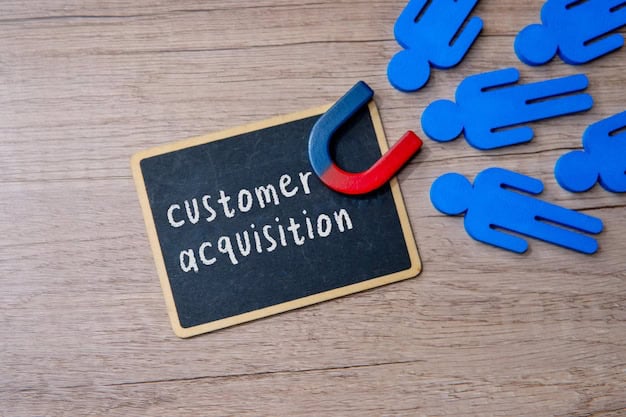Estimated reading time: 12 minutes
Key Takeaways
- Understanding Customer Churn: Grasping the concept and measurement of customer churn is vital for business sustainability.
- Predictive Analytics: Leveraging data to identify and retain at-risk customers can significantly boost profits.
- Effective Onboarding: A robust onboarding process reduces early churn and enhances customer satisfaction.
- Proactive Communication: Regular and personalized interactions foster stronger customer relationships and loyalty.
- Loyalty Programs: Rewarding repeat customers and building long-term relationships are essential for minimizing churn.
- Customer Feedback: Collecting and acting on feedback helps in continuous improvement and reinforces customer trust.
Table of contents
In today’s competitive business landscape, implementing effective strategies to reduce customer churn is crucial for long-term success. Customer churn, the rate at which customers stop doing business with a company, can significantly impact revenue, growth, and overall sustainability. By focusing on customer retention, businesses can maintain steady income streams, reduce acquisition costs, and foster sustainable growth. This blog post will explore various strategies supported by reputable research findings to help you reduce customer churn and enhance your retention efforts.
Understanding Customer Churn
Customer churn refers to the percentage of customers who cease their relationship with a business over a specific period. Measuring and understanding your churn rate is essential for gaining insights into your customer retention effectiveness. High churn rates can negatively impact profitability, disrupt revenue forecasts, and impede business growth.
According to a study by Bain & Company, increasing customer retention rates by just 5% can lead to a 25-95% increase in profits. This statistic underscores the importance of managing churn and implementing effective retention strategies.
Importance of Customer Retention
Customer retention is closely linked to business sustainability. Compared to acquiring new customers, retaining existing ones is far more cost-effective. Research shows that it can cost up to five times more to attract a new customer than to keep an existing one.
Moreover, high customer satisfaction leads to increased loyalty, word-of-mouth referrals, and higher lifetime value per customer. Prioritising customer retention not only reduces churn but also contributes to overall business growth and stability.
Key Strategies to Reduce Customer Churn
Implementing a combination of strategies is essential for effective churn reduction. Let’s explore some key approaches:
Churn Rate Reduction Techniques
Utilise Predictive Analytics
Leverage machine learning and behavioural data to identify customers likely to churn. This approach allows for preemptive outreach and intervention based on predictive insights. Tools like IBM Watson and Salesforce Einstein can assist in implementing predictive analytics for churn reduction.
Effective Onboarding Process
Develop a clear roadmap and robust support system for new customers. An effective onboarding process helps customers understand your product and derive value early on, reducing the likelihood of early churn. Consider creating interactive tutorials, personalised welcome emails, and step-by-step guides to enhance the onboarding experience.
Enhancing Customer Satisfaction
Exceptional Customer Support
Provide fast, accessible, and omnichannel customer service. Addressing concerns promptly prevents issues from escalating to cancellations. Implement automated chatbots and proactive notifications to enhance support efficiency. Consider offering 24/7 support options and multiple communication channels to cater to diverse customer preferences.
Educational Resources
Develop comprehensive tutorials, FAQs, and onboarding materials. These resources empower customers to use your products effectively, reducing frustration and increasing satisfaction. Create video tutorials, knowledge bases, and regular webinars to keep customers informed and engaged.
Proactive Communication
Regular, Meaningful Interactions
Stay engaged with customers through updates, tips, and regular check-ins. These interactions show customers that their business is valued and that you care about their experience. Implement a customer communication calendar to ensure consistent touchpoints throughout the customer lifecycle.
Personalised Engagement
Tailor communications and offers to individual customer needs and preferences. Personalisation increases the relevance of interactions, thereby enhancing loyalty. Use customer data to segment your audience and create targeted campaigns that resonate with specific customer groups.
Leveraging Customer Feedback
Collect and Analyse Feedback
Implement methods for collecting customer feedback, such as surveys and feedback loops. Analysing this feedback helps identify pain points and areas for improvement. Use tools like SurveyMonkey or Typeform to create engaging and easy-to-complete feedback surveys.
Act on Feedback
Implement visible changes based on customer feedback. Letting customers know their voices are heard reinforces trust and commitment. Create a feedback loop where you communicate the changes made based on customer suggestions, showing that you value their input.
Building Loyalty Programs
Reward Repeat Customers
Develop loyalty programmes that offer incentives, exclusive offers, or points to reward repeat business. These programmes acknowledge customer milestones and encourage advocacy. Consider tiered loyalty programmes that offer increasing benefits as customers engage more with your brand.
Foster Long-Term Relationships
Design loyalty programmes that make continued business more attractive. Offer exclusive access to new products, VIP customer service, or special events for loyal customers to strengthen their connection with your brand.
Executing Win-Back Campaigns
Re-engage Lost Customers
Deploy targeted campaigns such as email or SMS with special offers or updates tailored to reasons for previous departure. Analyse customer data to understand why they left and create personalised win-back offers that address their specific pain points.
Personalised Outreach
Understand why customers left and address those specific issues in communications. Create segmented lists of churned customers based on their reasons for leaving and develop targeted messaging for each segment.
Segmenting High-Risk Customers
RFM Segmentation
Utilise Recency, Frequency, Monetary (RFM) segmentation to identify less engaged or high-risk customers. RFM analysis helps focus retention strategies on the most at-risk segments. Implement a scoring system based on these factors to prioritise your retention efforts.
Targeted Strategies
Customise interventions such as personalised offers or content to different customer segments identified through RFM. Develop specific retention campaigns for each RFM segment, addressing their unique needs and preferences.
Fostering Community Building
Create Customer Communities
Develop spaces such as forums, social groups, or events where customers can connect, share experiences, and support each other. A sense of community enhances customers’ emotional connection to your brand. Consider creating a branded online community platform or hosting regular user group meetups.
Encourage Advocacy
Empower community members to become brand advocates. Advocacy amplifies loyalty and reduces churn. Implement a referral programme or create exclusive ‘ambassador’ roles for your most engaged community members.
Implementing Predictive Analytics
Predictive analytics plays a crucial role in forecasting churn trends by analysing customer behaviour, transaction data, and engagement metrics. Integrating predictive analytics into customer relationship management (CRM) systems allows businesses to anticipate and address potential churn proactively.
Key data points used in predictive models include:
- Purchase frequency
- Customer interactions
- Support tickets
- Product usage patterns
- Engagement with marketing communications
By leveraging these insights, businesses can identify at-risk customers and implement targeted retention strategies before churn occurs. This data-driven approach significantly enhances the effectiveness of churn reduction efforts.
Conclusion
Reducing customer churn requires a comprehensive approach that combines predictive tools, proactive support, targeted engagement, and community-building initiatives. By focusing on customer satisfaction and personalised experiences, businesses can lower churn rates and build loyal, long-term relationships.
Remember, the key to successful churn reduction lies in understanding your customers, anticipating their needs, and consistently delivering value. Implement these strategies to reduce customer churn, and you’ll be well on your way to enhancing retention and fostering sustainable business growth.
Call to Action
Now that you’re equipped with these powerful strategies to reduce customer churn, it’s time to take action. Evaluate your current churn rates and retention strategies. Are there areas where you can implement these techniques to improve customer retention?
Don’t let valuable customers slip away. Contact our team today for a consultation on how to tailor these strategies to your specific business needs. Together, we can create a robust retention plan that will keep your customers engaged, satisfied, and loyal for years to come.
FAQs
1. What is customer churn?
Customer churn refers to the rate at which customers stop doing business with a company over a specific period.
2. Why is reducing customer churn important?
Reducing customer churn is crucial as it directly impacts revenue, growth, and business sustainability. Retaining customers is more cost-effective than acquiring new ones.
3. How can predictive analytics help in reducing churn?
Predictive analytics can identify customers who are likely to churn by analyzing behavioural data and trends, allowing businesses to intervene proactively.
4. What role does customer onboarding play in churn reduction?
An effective onboarding process helps customers understand and derive value from a product or service early on, reducing the likelihood of early churn.
5. What are some effective loyalty programs to reduce churn?
Effective loyalty programs include offering incentives, exclusive offers, points for repeat business, and tiered benefits that reward long-term engagement.
6. How can customer feedback influence churn rates?
Collecting and acting on customer feedback helps identify pain points and areas for improvement, enhancing customer satisfaction and reducing churn.
7. What is RFM segmentation?
RFM segmentation stands for Recency, Frequency, Monetary segmentation. It’s a method used to identify high-risk customers by analyzing how recently a customer has purchased, how often they purchase, and how much they spend.
8. Can building customer communities help reduce churn?
Yes, building customer communities fosters a sense of belonging and loyalty, making customers more likely to stay engaged with the brand.
9. What challenges might a business face when implementing churn reduction strategies?
Challenges include accurately identifying at-risk customers, allocating resources effectively, integrating data analytics tools, and ensuring consistent communication.
10. How can businesses measure the success of their churn reduction efforts?
Businesses can measure success by tracking metrics such as churn rate, customer lifetime value, retention rate, and overall revenue growth.







